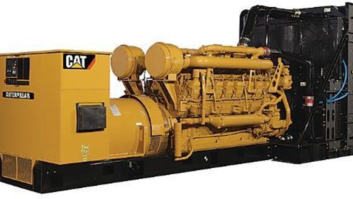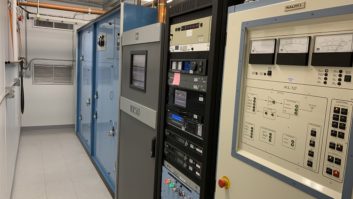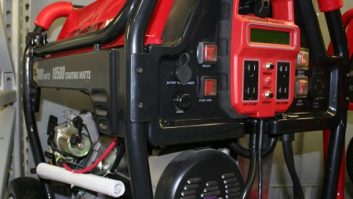
The only constant is change; and our industry has had more than its fair share. But through recurring cycles of contraction and expansion, broadcast properties continue to be bought and sold. “Due diligence” — the process of establishing and evaluating suitability and worth — remains a necessary exercise.
Consulting engineers provide a wide breadth of services, which often include plain and simple guidance, a determination of the best path to proceed. We research, inspect, evaluate and then filter all this through our lifetimes of experience, ultimately lining up the decision chain so that our clients can determine whether they want to put ink on the check or pass.
Conversely, our due diligence for ownership establishes a defensible asking or listing price when a station is offered for sale.
Few buyers or sellers use their own funds; so almost without exception, this extensive effort is distilled into a written report for many, many parties to review. Ownership, management, capital sources, risk managers, insurers, key staff members, caterers (kidding) …

But your report will go farther and wider than you could ever imagine. The broadcast industry may not be as porous with leaks as Washington politics are; but you will be surprised at the number of people, intended and unintended, who will read your erudite prose.
As nothing is ever really lost on the internet, these reports can have eternal life. If your name is on such documents, they must be factual; and if your opinions or judgment are annotated, they should be identified clearly.
For the sake of your reputation, they should also be as well-executed as you can make them. Think “crisp report writing” as if you’re sending these pages from the battlefield or the daily log of Joe Friday, “Just the facts, ma’am.”
Even before you leave the office on your field inspection, you should have:
- Reviewed the current station license(s) of the instant property … these are the ones that matter
- Reviewed the technical and ownership history of the station and, if the station is old enough, the PDF file cards from the FCC records.
- Reviewed the online FCC public file.
- Done a social media sweep for surprises, such as a lawsuit, collection effort, problems or kudos regards programming as well as public perception (including signal) that goes directly to “goodwill.”
- Gathered the asset documents, such as the property maps and titles for the station’s facilities.
- Reviewed the lease and contracts related to technical operations. Will the site lease be lost in a year or two, do they own the dirt under their ground system, or do they just have an easement on someone else’s property?
- Read the documents pertaining to rented or leased site facilities. Same with any interference codicils and site-share fees, not to mention terms, lease renewal bonuses, etc., which can have a huge impact on operations.
- Reviewed utility bills. What are the forward going liabilities? Is the plant technically and energy efficient?
- Inspected coverage maps, both claimed and calculated, with population and demographic overlays.
- Reviewed interference calculations and spacing if applicable.
- Reviewed the asset inventory and noted any items that demand a hands-on inspection. Where is that Cadillac Esplanade or Range Rover that supposedly is used exclusively by the CE, or is it really parked in the GM’s driveway for the spouse’s use?
- Gathered contact information and made appointments with knowledgeable parties to obtain ready access to the facilities. I once made a 1,200-mile trip and then was told that I should have made an advance security appointment — cost $300 — to get onto the roof of a skyscraper to inspect the transmitter plant and antenna
- Packed two cameras: a video camera for general sweeping information intake and a still camera for details. Think something like a slow video pan of the transmitter room and a close-up still of the “rat’s nest” of wiring in the equipment racks as amplification. Double up on visuals to CYA in the event of camera failure.
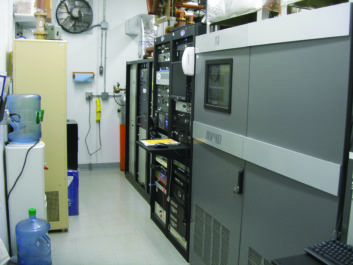
Every station is different, usually reflecting the personality of management. So when you prepare to visit the facility, have a specific plan of inspection with goals to gather the needed information.
Above all, be logical and ready to bring back factual notes, not just impressions or recollections. Everyone has an opinion; your business is to gather as many facts as you can.
ON-SITE
Now we’re at the station, so let’s begin:
- Start your inspection by gathering up exact names, positions and latest contact numbers of responsible personnel, including their FCC attorneys in case you have to reach back for clarifications, etc. Quite often, you have to attribute a statement to a particular party, and you always want to correctly identify these folks.
- Review with management the assembled material you have, especially any questionable material and circumstances around that material to double-check the accuracy of these issues.
- Inspecting the physical studio/office is akin to a house inspection, so we won’t enlarge on this effort, but important points that must be addressed include safety issues, space per employee (does it comply with local codes?) and efficient work arrangement.
- We could devote a series of articles to the efficient and qualitative aspects of air/production facilities; this evaluation is a major component of technical due diligence to answer the biggest of all questions: Can the facility function effectively and if not, what’s wrong?
- Do an inventory of the actual capital equipment at the transmitter(s). There have been some big surprises in my work: a missing, nearly brand-new top-end processor (it had been loaned to another station, which then loaned it to another one of their stations in a different market) … and in another case, a totally different main transmitter “borrowed” from another station because it sounded better.
- At the transmitter plant, liabilities and capital expenditures have big numbers attached to them, and therein lies information that is most often needed. Can this facility do its job, and how long until the next big investment event? What looms next, and what is your vision of the plan at the two poles — “just sufficient (or barely adequate)” vs. what is “optimal”?
- Possibly the most overlooked concern is how facilities are interconnected for programming and control: STLs, ICRs, internet, satellite, RPU, ISDN, telco copper, tin-cans with string, whatever. And how reliable, effective and hardened with redundancy is this infrastructure? Connection should be 100% reliable, not 99.9%. (One pragmatic CE using the internet for distribution casually mentioned, “We get a few audio hits each day, where we lose programming feed for seconds at a time!”) Silence is the kiss of death on radio, especially when inexplicable and abrupt; the “next-station” button is right there on our steering wheels.
(As an aside, take good care of yourself on these jaunts. Drink plenty of water, eat regularly and well. Don’t overextend yourself. More stations are out there for you to see, and there is always tomorrow.)
BACK AT HOME
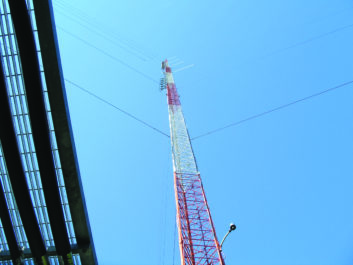
Unless you’re under the tightest deadline, when you return to the office, write the report Jesuit style: just begin and let it flow, covering the inspection either chronologically or by section. Then go back through, checking your notes to confirm actual numbers. (Was the power supply to the plant 480-volt three-phase, or was it 208?) Polish up your organization, grammar and tense — add what you missed on the first pass.
Reports of this nature are built essentially on two kinds of sentence: declarative and interrogatory.
For example, let’s discuss the business office part of the acquisition. First, a declarative statement: “Business and sales space is on the second floor, and the usable space (subtracting washrooms, corridors, vestibules, etc.) is 1,200 square feet for 15 cubicles that are approximately 8 by 8 feet, for a total of about 1,000 of that 1,200 square feet.”
Then, as an interrogative, we pose the question: “Will that be enough if you consolidate business and sales from other stations to this location?”
You can see where the yin and yang of these reports are built on the two sides of the seesaw.
Once this first effort is completed to your satisfaction and missing information collected and inculcated into the text, your organization has been optimized and your prose falls upon the eyes like a perfect dawn (I think I’m quoting Steinbeck here), let it sit for at least 24 hours.
Do your final touchup after your head has really cleared. Make a final pass, channeling first your client and their goals, and then a dispassionate reader looking for a document that will allow a considered decision based on factual data and an honest, independent appraisal.
NEED TO KNOW
Some final general comments about these reports.
Speculation not based on facts is neither helpful nor appreciated. Without a factual motivation, do not stray from the goals that you were charged with (what are you being paid for).
Occasionally, you may have cause to include some details you’d discovered beyond the focus of your inspection. The most egregious circumstance I’ve encountered happened after removing a service cover that seemed to have had an awful lot of use (screw heads nearly paint free compared to the rest of the gear). Inside was a notable stash of drugs and weed (very illegal at the time). I put the cover back on and provided a verbal report covering that one point to the prospective buyer.
Your final filter of review should parallel advice I was given in the military.
For some reason that remains a mystery to me, when my time was up the army really wanted me to stay; and the incentives were great. To show their confidence in me and dangle potential promotion, I was sent to command school. Ordinarily, that set of briefings is for colonels who are candidates for general grade officer.
So who teaches potential generals what being a general is like but serving generals! Each of these august and accomplished folks presented an intense 45 minutes on a germane topic. One of these, a fellow who looked like he had been sent over from central casting to play a general, talked about work at a Pentagon level.
At that echelon in making command decisions, “No one is interested in what you think. Everyone has thoughts and ideas. The person in charge, all the people involved in the mission need to know what you know … for certain. Your thinking should focus directly on what do we need to know to make the best decision, and if lacking, what is missing, and how do we find that missing item?”
That experience made for a very interesting two days. It became quite clear to me why these people were generals.
Your final pass should focus on the facts, just as theirs would in your situation.
My word processor here in the office has every deluxe feature you could imagine — spell check, grammar check, word repeat check, composition check. The only thing it does not have is thought check! That’s up to you and me. When the project is complete and if you put out the effort, your best job will be there in the print; and everyone will be well served.
Charles “Buc” Fitch, P.E. is a registered professional consultant engineer, senior member of the SBE, lifetime CPBE with AMD, licensed electrical contractor, former station owner and former director of engineering.
